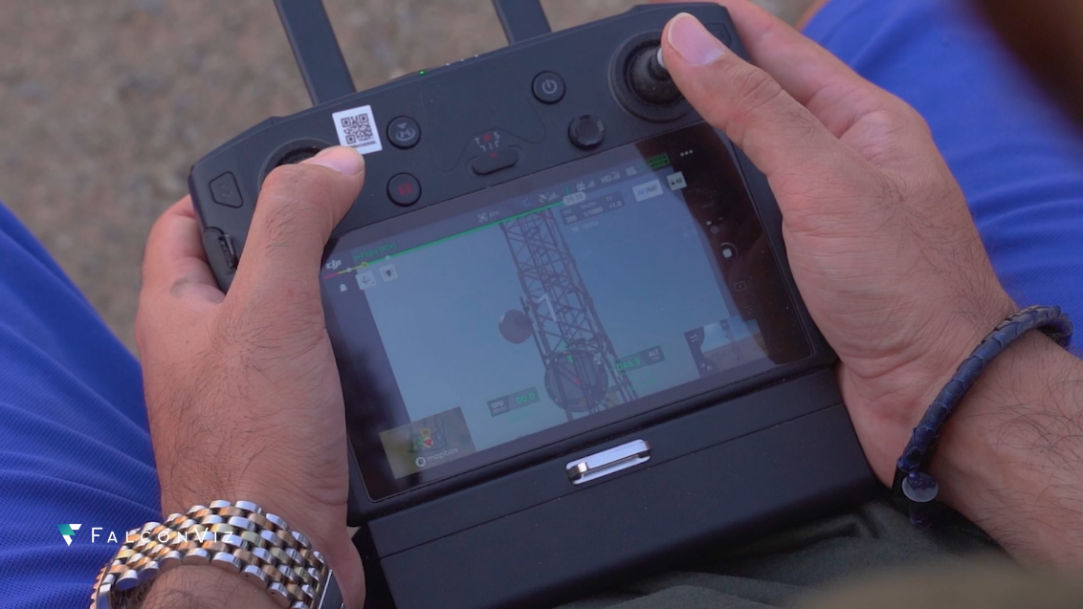Blog
Maximizing Profitability:
The Financial Benefits of Utilizing Drones for Asset Inspection
The return on investment (ROI) of using drones in inspection varies depending on the industry, the specific application, and the scope of the project. However, in general, using drones for inspection can lead to significant cost savings, increased efficiency, and improved safety.
For example, in the oil and gas industry, drones can be used to inspect pipelines, flare stacks, and other infrastructure, which can reduce the need for expensive and time-consuming manual inspections. In addition, drones can quickly identify potential problems, allowing companies to address them before they become major issues that could result in costly downtime.

Similarly, in the power and utility industry, drones can be used to inspect transmission and distribution lines, towers, and substations, which can improve the reliability of the electrical grid and reduce the risk of outages. Using drones can also reduce the need for helicopters and other heavy equipment, which can be costly and time-consuming to deploy.

In the telecom industry, drones can be used to inspect cell towers and other infrastructure, which can improve network performance and reduce the risk of service interruptions. Drones can also provide high-resolution images and data, which can be used to create detailed 3D models of the infrastructure, allowing companies to identify potential issues and plan for future upgrades.

Overall, the ROI of using drones in inspection can be significant, particularly when compared to traditional inspection methods. By reducing the need for manual inspections, improving safety, and increasing efficiency, companies can save time and money while improving their overall operations. It's difficult to give a specific ROI percentage for each industry as it can vary based on factors such as the size of the company, the complexity of the infrastructure, the frequency of inspections, and the cost of traditional inspection methods. However, studies have shown that using drones for inspections can result in cost savings ranging from 20% to 50% compared to traditional inspection methods in various industries.
For example, in the oil and gas industry, using drones for inspections has been shown to result in cost savings of up to 50%. In the telecom industry, drone inspections have been shown to save up to 30% compared to traditional inspections. In the construction industry, drone inspections can result in savings of up to 40%. It's important to note that the ROI of using drones for inspections goes beyond just cost savings. It also includes benefits such as increased safety for workers, improved data accuracy, and faster inspections, which can lead to improved maintenance and better decision-making.
Here are some of the top companies that have adopted drone technology for asset inspection in various industries over the past five years:
- GE: General Electric (GE) has been using drones for inspection of power lines, wind turbines, and other assets. They have reported cost savings of up to 25% by using drones for inspections.
- Shell: Shell has been using drones for offshore inspections of oil rigs, pipelines, and other infrastructure. They have reported a 50% reduction in inspection time and a 30% reduction in costs.
- BP: BP has been using drones for pipeline inspections and monitoring of oil spills. They have reported a 90% reduction in the time it takes to inspect pipelines and a 70% reduction in the cost of inspections.
- ExxonMobil: ExxonMobil has been using drones for inspection of oil and gas facilities, pipelines, and offshore platforms. They have reported a 90% reduction in the time it takes to inspect facilities and a 50% reduction in inspection costs.
- Intel: Intel has been using drones for inspection of their facilities and infrastructure, including their data centers and manufacturing plants. They have reported a 40% reduction in the time it takes to complete inspections and a 30% reduction in costs.
- AT&T: AT&T has been using drones for cell tower inspections and to assess damage after natural disasters. They have reported a 50% reduction in the time it takes to complete inspections and a 30% reduction in costs.
- Amazon: Amazon has been using drones for inventory management in their warehouses and for delivery of packages. They have reported a significant reduction in delivery time and costs.
- Google: Google has been using drones for mapping and surveying, as well as for monitoring their solar farms and other infrastructure. They have reported a 50% reduction in the time it takes to complete surveys and a 30% reduction in costs.
Note: This is not an exhaustive list, and there are many other companies that have adopted
drone technology for asset inspection in various industries.
FalconViz, a Saudi innovative company, have been in the forefront of adopting drone
technologies
in Saudi Arabia, having been in the Saudi market since 2015. We are excited to expand on our
experience in inspecting multiple different assets in different industries in the Kingdom,
to
hopefully reach very high levels of adoption across various sectors in Saudi Arabia and
contribute to the country’s 2030 Vision.
